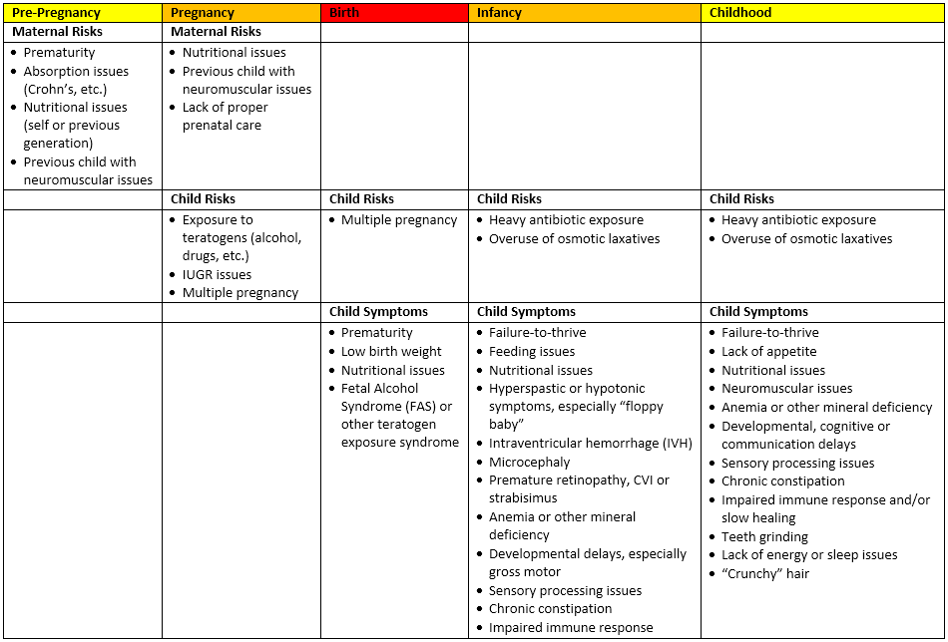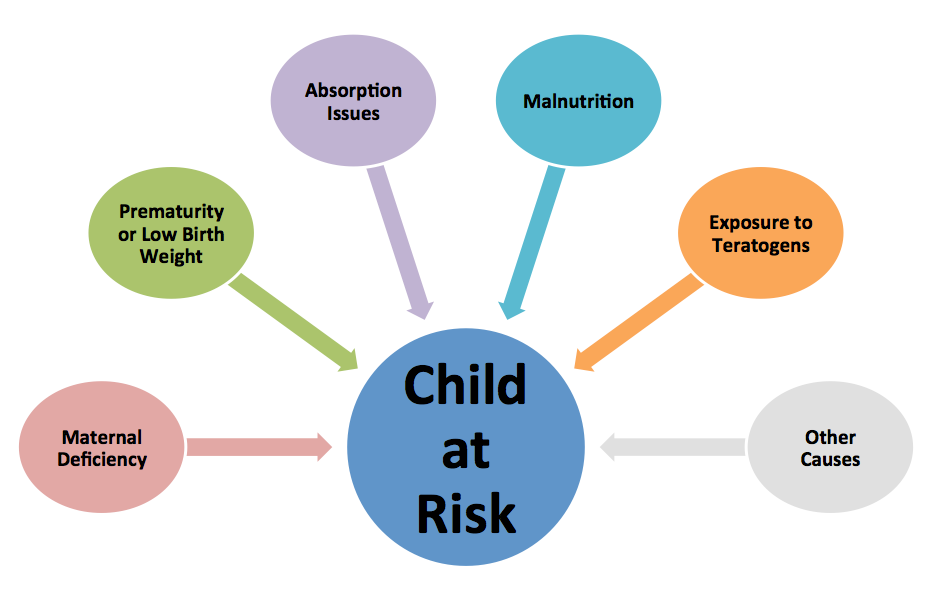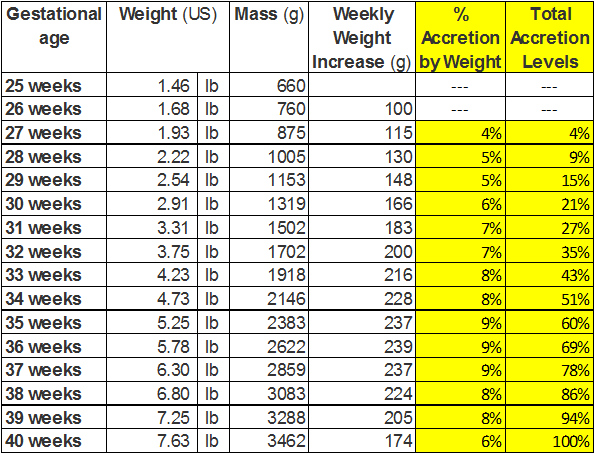Note: A pdf of this page is currently in progress.
Identifying Children at Risk
Ida M Briggs
Micronutrient deficiency results in growth retardation in human beings as well as animals, which includes:
- poor growth and appetite
- impaired immune responses
- weak muscles
- developmental delays
- and “general ill-thrift”
It presents in different ways during the life cycle:
- At birth, as low birth weight or premature babies
- In infancy, as failure-to-thrive and developmental delays
- In childhood, the weak muscles (especially core) are diagnosed as cerebral palsy
- Deficiencies also present as other neuromuscular issues, including sensory processing issues
Two key indicators of probable deficiency are low birth weight and weak core strength.
Early oral correction reduces these symptoms, which should result in lowered rates of infant mortality and morbidity, and healthier childhood populations
Deficiency Risks and Symptoms during Perinatal Periods
Risk factors and symptoms of deficiency have been well known and documented for decades. Unfortunately, the underlying cause of many of these symptoms is frequently ignored because of a common assumption that these micronutrients are ubiquitous in a healthy diet. While children born prematurely and/or with low birth weight are known to have micronutrient (trace mineral) deficiencies at birth (due to the fact that acretion of trace minerals takes place in the third trimester of pregnancy, and thus shortened or non-existent third trimesters mean less time for that process to take place), current protocols are usually “go home and wait for your child to SELF-CORRECT when they begin eating a normal diet between one and two years of age”. Another issue is that pregnant women who eat processed foods or have absorption issues may not be getting an adequate supply of micronutrients through a normal food supply, and thus cannot pass what they don’t have on to their offspring.
How Micronutrient Deficiency Occurs
Five main common causes of childhood micronutrient deficiency have been identified, with the potential for others:
Deficiency Cause: Maternal Deficiency
- Children of women who were born premature
- Women with absorption issues
- Yeast issues
- Celiac, Crohn’s, etc.
- No access to micronutrient-dense food
- Food deserts
- Famine
- Poverty
- Poor prenatal care
- Women who have already given birth to at least one child with deficiency issues
- Women carrying multiple pregnancies
The bottom line is this: “If mom doesn’t have it, she can’t pass it on to her offspring.”
Deficiency Cause: Prematurity or Low Birth Weight
- Low Birth Weight
- Clinically defined as 5 pounds or less, but newborns as large as 7.3 pounds may still be deficient
- Gestational Age < 38 weeks
- Children in multiple births
Calculating Probable Accretion Levels by Gestational Age & Weight
Deficiency Cause: Absorption Issues
- Leaky Gut
- Yeast issues
- Heavy Antibiotic Usage (History of Ear Infections)
- Celiac, Crohn’s, etc.
- Pyrrole Disorder
- Overuse of osmatic laxatives
Deficiency Cause: Malnutrition
- No access to micronutrient-dense food
- Food Deserts
- Famine
- Poverty
Deficiency Cause: Exposure to Teratogens
- Fetal Alcohol Syndrome (FAS) or “Crack” Babies
- Also an issue: mothers with substance abuse problems traditionally do not eat well or have good prenatal care during pregnancy
Deficiency Cause: Other Causes
- This is an emerging treatment and more issues will be discovered; the challenge will be in understanding the forest – not just the trees, but the root causes as well.


